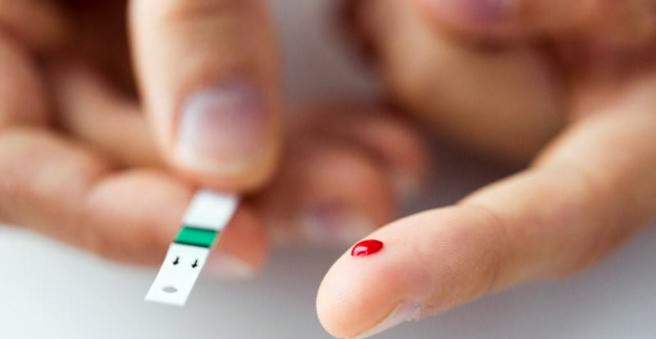An oGTT (oral glucose tolerance test, sugar stress test) indicates a disturbed glucose metabolism (glucose tolerance disorder). He supports the diagnosis of diabetes mellitus. Read all the important things about the oGTT – how it is carried out, what the oGTT values mean and what the risks of the investigation are.

What is an OGTT?
An oGTT checks how well the body can process added sugar (glucose).
When sugar is added, it enters the bloodstream from the small intestine and causes an increase in blood glucose concentration. By releasing the hormone insulin from the pancreas, glucose is channeled into liver, muscle and fat cells. As a result, the blood sugar level drops again. This is also called glucose tolerance designated.
However, if the glucose can only be introduced insufficiently into the cells, it is called one impaired glucose tolerance or one glucose intolerance, The blood glucose level remains elevated, which can be determined by a blood glucose measurement.
When do you make an oGTT?
The oGTT is carried out in suspected glucose tolerance, if a measurement of so-called fasting glucose (fasting blood sugar), however, provides no clearly disease-relevant results or certain risk factors are present. These include:
- Type 2 diabetes mellitus in first-degree relatives (like parents)
- Overweight or physical inactivity
- arterial hypertension (hypertension)
- Dyslipidemia
- vascular
- Proteins in urine (albuminuria)
- Between the 24th and 28th week of pregnancy to exclude gestational diabetes (gestational diabetes)
The more risk factors are present, the sooner a possible glucose intolerance should be clarified with an oGTT.
What do you do with an oGTT?
At least three days before the test, you should eat a high carbohydrate diet (150 to 250 grams of carbohydrates a day to avoid falsification of oGTT levels, which is equivalent to a normal mixed diet.) Eight to twelve hours before the oGTT, you must not eat, alcohol or sweetened Consume drinks and do not smoke.
To determine fasting glucose, a blood sample is taken first. Then drink a sweet test solution (75 grams of glucose dissolved in 250 to 300 milliliters of water). After two hours, blood is drawn again to measure blood sugar. During this time, you should not strain or smoke. This test procedure is also used 75 g oGTT designated.
Is the blood glucose value after two hours at over 140 milligrams per deciliter(and the fasting blood glucose below 126 mg / dl), there is a disturbed glucose tolerance (precursor of diabetes). Is the measured value 200 milligrams per deciliter or moreThat speaks for diabetes mellitus. The fasting blood sugar is then at least 126 mg / dl.
Under certain conditions, an oGTT is not meaningful:
- acute infections and serious illnesses
- Gastric and duodenal ulcers
- Dysfunction of the liver
- acute potassium and magnesium deficiency
- three days before, during and three days after menstruation
- after stomach operations
In addition, cortisone-containing medicines, antihypertensives (beta-blockers) and diuretics may interfere with glucose tolerance. Your doctor will tell you which medications you can continue taking before the examination.
oGTT – Pregnancy
Between the 24th and 28th week of pregnancy, an oGTT is performed on every woman to exclude gestational diabetes (gestational diabetes). First, a pre-test is on: The pregnant woman drinks a sugar solution with 50 grams of sugar (50-g-oGTT). She does not have to be sober for that! If the venous blood sugar level is below 135 mg / dl an hour later, everything is fine and the test is over.
At a reading of 135 mg / dl or more, on the other hand, the 75 g oGTT described above follows in fasted conditions. Gestational diabetes is therefore present when:
- of the Fasting blood sugar (Venous blood) at92 mg / dl or higher lies
- and / or the blood sugar one hour after drinking the sugar solution180 mg / dl or higher lies
- and / or the blood sugar two hours after drinking the sugar solution153 mg / dl or higher lies
For the diagnosis of gestational diabetes, it is sufficient if one these limits is exceeded.
What are the risks of an OGTT?
An OGTT usually runs without complications. Blood collection may result in bruising or minor bleeding. In known disorders of glucose utilization, the sugar stress test should not be performed. These include diagnosed diabetes mellitus, gastrointestinal or liver diseases.
What do I have to consider after an oGTT?
Your doctor will discuss with you the result of the oGTT. If oGTT levels indicate impaired glucose tolerance, you should regularly monitor your blood sugar levels and have risk factors for cardiovascular disease checked (such as lipid metabolism disorders, high blood pressure, etc.).
In addition, adjust your diet to your calorie needs and eat as much fiber as possible and lots of fresh fruits and vegetables. If you are overweight, you should try to lose weight. Avoid finished products and alcohol. Regular exercise also helps to keep blood sugar levels stable, as the muscles then increasingly utilize glucose. In addition, physical activity helps to maintain or maintain a healthy body weight. Highly recommended is also a smoke stop (smoking cessation). It has a long-term positive effect on the development of diabetes mellitus and is also useful for prevention.
Usually, after three to six months another oGTT carried out.